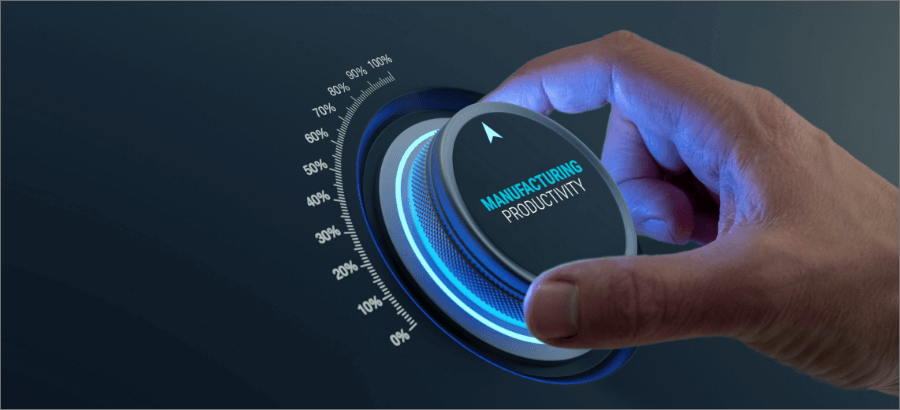Manufacturers of everything from computer chips to frozen chips use batch processing as their method of production. Probably the most famous example is the Swedish furniture manufacturer Ikea. Using batch manufacturing gives the company flexibility to produce similar items of its product range as the market demands.
Even though a company has a great product, good machinery and skilled workers, it also needs a software infrastructure to plan and manage the processes and information. That means an enterprise software system that addresses the processes in each function of the business and that unifies the information to improve collaboration and management.
Characteristics of batch manufacturing
Batch production is a method of manufacturing where identical or similar items are produced together in different sized production runs or batches. The method allows for products to be mass-produced without major changes to the product. Batches are a higher volume than a job shop. Each batch goes through one stage of the production process and then waits before all moving onto the next stage in the process to make the final product. Changes may occur between different batches, such as changes in colour or size.
Advantages of batch manufacturing
There are good reasons for adopting a batch manufacturing process.
- Goods can be produced in large numbers but at the same time allowing for changes along the way
- Conversely, manufacturers can make smaller batches with greater variety
- Producing goods in batches with variations reduces the risk of concentrating on one product
- It enables quality control checks at each stage instead of only at the end, which is an advantage over continuous mass production
- Wastage is reduced because batch sizes can be adjusted for the number of products required
- If one batch has a quality problem it is a lower cost to discard that batch than the volume of products of a continuous process
- It allows for scalability. For seasonal items, it is easier to adjust batch sizes and inventory requirements. If demand for an item unexpectedly increases, production can be adjusted accordingly
- Manufacturing in batch allows machinery to be used more efficiently and equipment costs can be spread over various products
- Since machinery is not continually active, running costs can be reduced and maintenance scheduled during downtimes
Batch manufacturers also have to cope with challenges specific to their production method. This includes managing batch queues, production scheduling to optimize batch runs, material management and quality control.
How ERP addresses challenges of batch manufacturing
An ERP system can help batch manufacturers with these challenges. For a batch manufacturer to operate, information is needed on what products are required, the raw materials and parts that go into the final product, the status of items currently in stock, what must be ordered and when to order ensure a product can be made. Furthermore, production cannot be accurately planned without knowing what the shop floor can handle. The advantage of an ERP system is that this complex interaction of processes is automated.
Control product changes
Before products become available they have to be designed. Manufacturers need a solution to streamline and control the product design process, including version control, an auditable history, and how changes impact costs. Once a design is approved, the changes and information need to be passed automatically to the production planning and management stage to ensure products are manufactured under agreed processes to the correct specifications.
Production and materials planning
Batches are typically manufactured based on a demand forecast and customer orders. With an ERP solution, forecasting and order data can be integrated into the production process through a Master Production Schedule (MPS). This is used together with a Bill of Materials (BOM) which contains detailed specifications of all the raw materials and parts needed to make up the final product. An ERP solution can handle complex BOMs to a high degree of precision.
The third part of the planning system is the Material Requirements Plan (MRP). This function uses data from the inventory function, and inputs from the BOM and MPS to schedule purchase orders for items, taking into account delivery schedules from different suppliers. With current disruptions of supply chains, it is a critical function to prevent stock-outs on required parts and raw materials.
The combination of MPS, BOM and MRP information determines the items to be manufactured, in what quantities and by when, and what must be procured. Doing all this manually would be tedious and impractical but is easy for an ERP system. Then there is a final function to consider – what is the capacity of the shop floor to manufacture products.
Batch manufacturers have to validate production targets against production capacity. An ERP system enables various elements of capacity planning – work centers, routings and loads – to be integrated and then used to establish actual production capabilities.
Production scheduling
Once all the elements of production have been planned and executed, there needs to be monitoring to ensure the shop floor is operating as expected. An ERP system can provide visibility into production resources and activities, and if needed, re-schedule activities if plans change or unexpected events occur.
Inventory management
Efficient management of inventory is important as both parts and products can build up in stock and increase storage costs. At the same time, adequate stock in the right location is needed to offer superior customer service.
With an ERP, inventory levels can be optimized to improve order fulfilment and offer features such as available-to-promise. This gives sales staff a reliable indicator of what they can promise to customers and when.
Quality control
Raw materials often vary in quality so tracking and control are essential to reduce wastage and defects. An ERP solution can track materials from purchase through production to customer and thereby maintain quality control. With this functionality it will also be possible to manage product recalls. The inventory management component of the ERP system can assist quality control by ensuring that items are stored under the right conditions or for the correct amount of time. Should these criteria be breached, the inventory module will automatically place them in quarantine.
Batch manufacturing needs ERP
Today’s batch processing needs information, automation and collaboration to operate properly. An ERP system assists with all three of these requirements.
Having information from the ERP solution about how much is being sold and what stock is on hand, a manufacturer can ensure that the right inventory is available for production at the right time, rather than postponing production due to stock-outs or incorrect stock.
With sales and production integrated through an ERP application, production can be scheduled to start so that orders can be fulfilled on time.
In the modern manufacturing world with sensors being increasingly used on machinery, an ERP system can link to equipment via the internet, giving greater visibility of shop floor activities and the movement of batches through each stage of manufacturing.
An ERP application gives batch manufacturers the opportunity to improve the business by streamlining processes, integrating disparate functions, and providing information to better manage operations.







